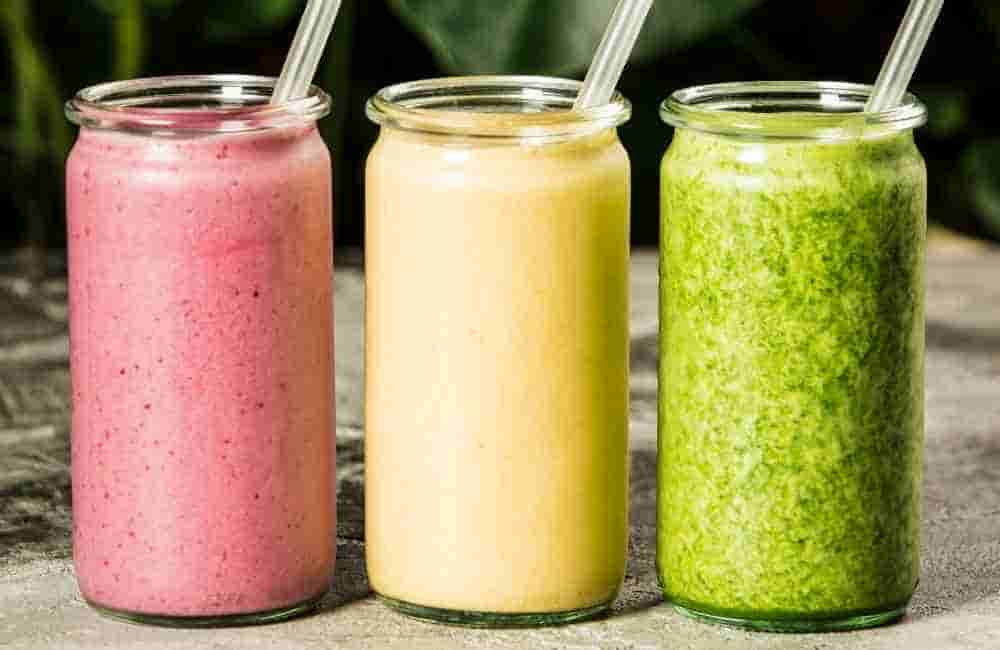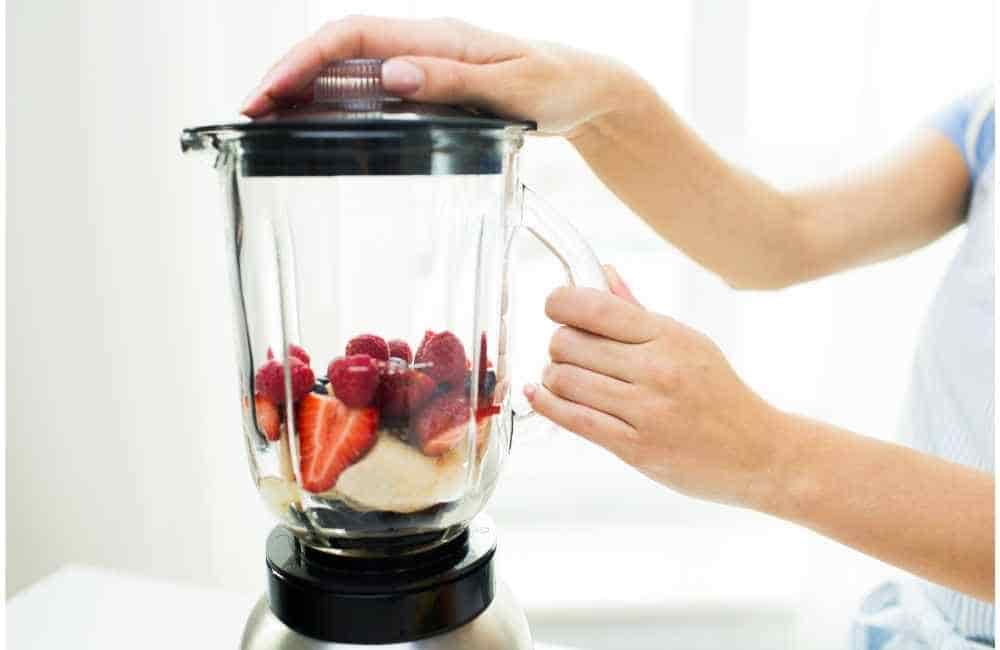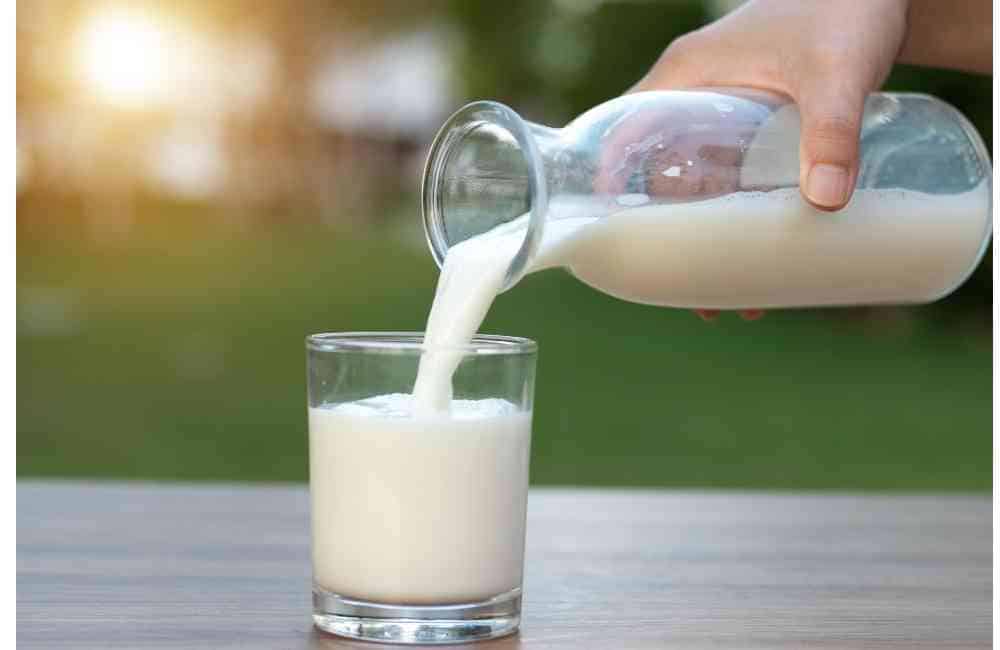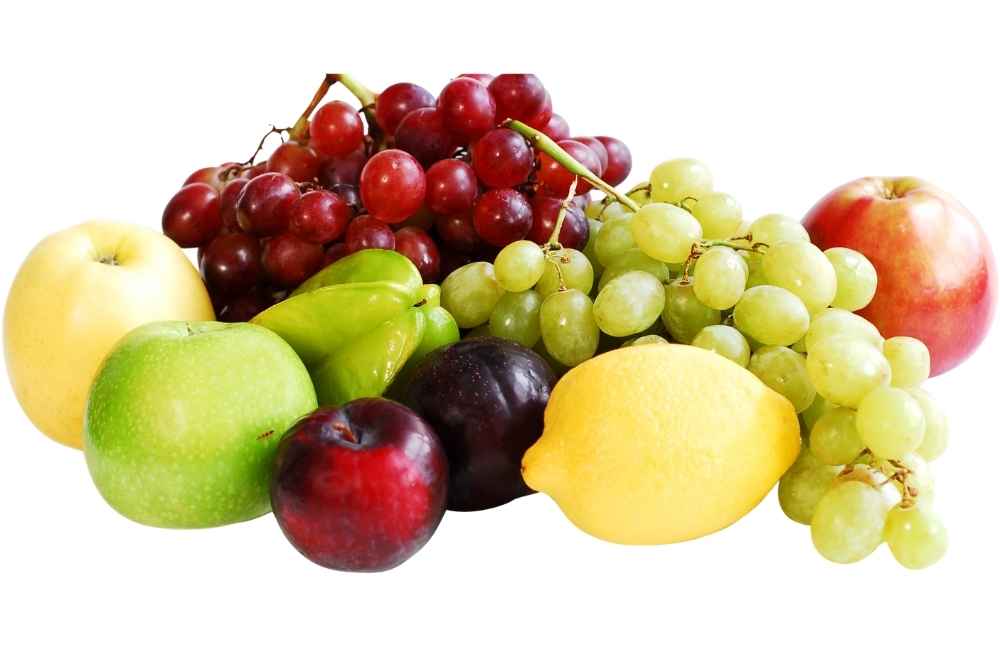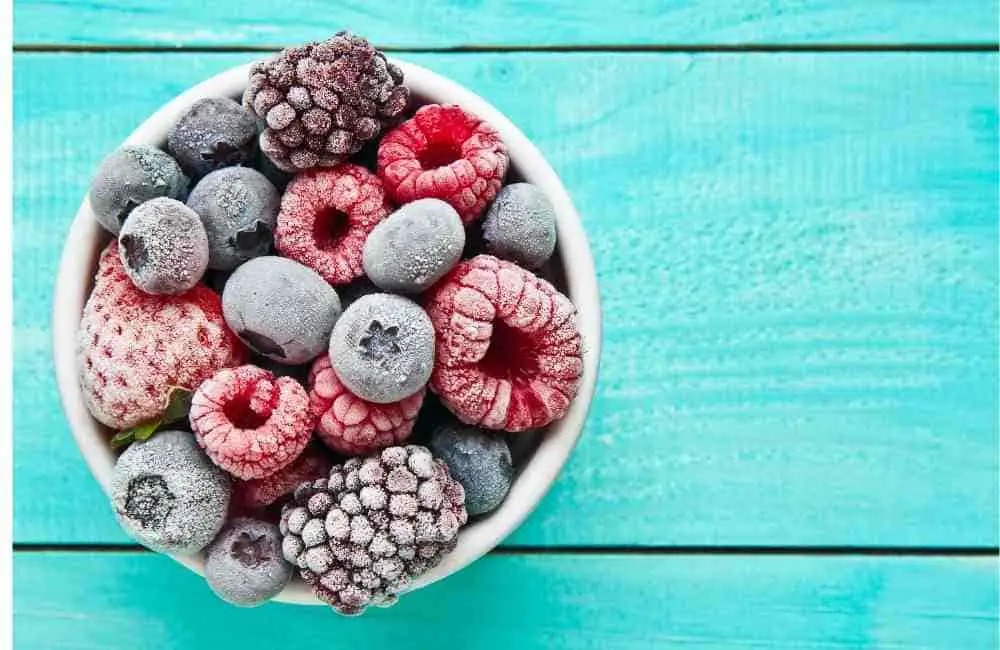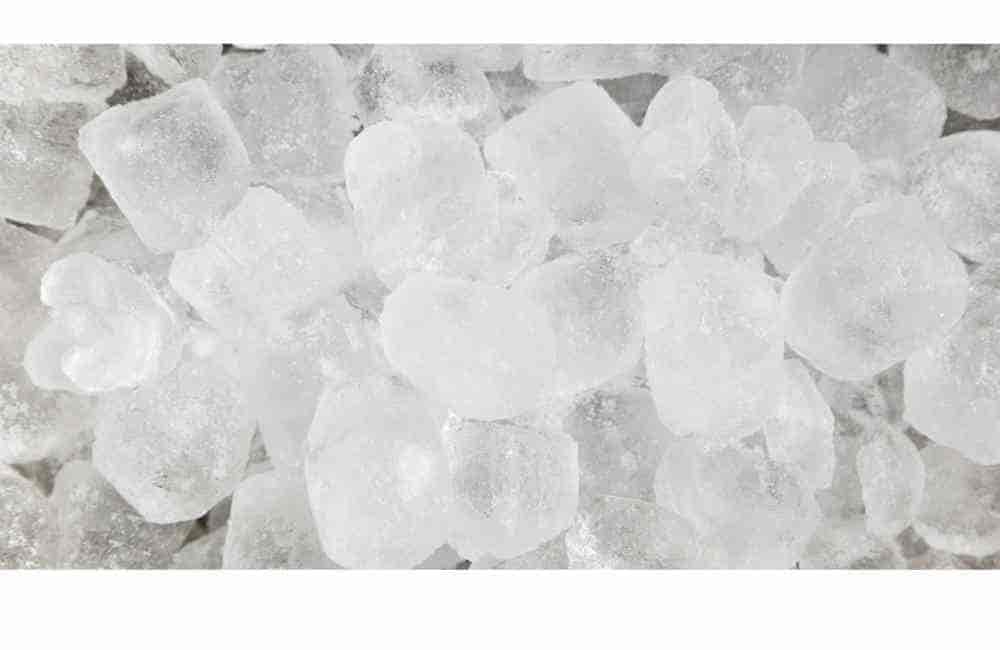One day at my local smoothie stand, a question occurred to me. I’d just shelled out seven bucks, plus tax and tip, for the tasty treat. It was delicious, but I couldn’t help asking myself, “Why can’t I make one of these?”
As it turns out, I could. I did. And you can make one, too.
When you design your own smoothie, you get to fix it up any way you want. Thick for a spoon or thinner for a straw. Fruits or vegetables or both. Chunky or smooth.
If you don’t want to think too hard, you can just throw a bunch of your favorite ingredients in a blender and let them churn. The result will probably be drinkable. It might even be good.
However, there’s an art, and even a bit of science, to choosing the best ingredients and blending them in the right order.
How To Make the Perfect Smoothie with the Consistency You Want
The smoothie that’s right isn’t necessarily the one that’s perfect for your brother. Or your friend. Or the person across the street. Learning how to make the perfect smoothie with frozen fruit, or with any other ingredient, means making the smoothie that you think is perfect.
Still, there are some steps you need to follow no matter how you want your creation to turn out.
Choose a Good Blender
Believe it or not, you can actually make a smoothie without a blender. However, it limits the ingredients you can use to only a few soft ones. And, to make it work well, you have to start with a store-bought smoothie mix.
For a really creative smoothie, a blender is a necessity. A good one, if you plan to use ice. If there’s ice, even a top-notch food processor might work better than a so-so blender.
Choose Your Ingredients
The fun of smoothie making starts with deciding what you want to put in it. The basic ingredients of a smoothie are fruit, ice, juice and dairy product or dairy equivalent. That’s hardly a complete list. You don’t need all of them, and there are plenty more you can add.
You can use food that’s healthy, food you have a hankering for and food that just happens to be available in your kitchen.
Liquids
You’re going to need 1/4 to 1/3 cup of liquid for every cup of solid ingredients. Less, and your blender is going to have to keep working until it starts to hate you. More, and your result could be soupy.
You can use fruit juice. You can use green tea. You can use milk. That’s milk in the broadest sense, not just “moo juice.” If you like dairy milk, great, but soy milk, almond milk and even coconut milk are all fair game.
If you want you may use water, but isn’t that just a little bit boring?
The classic smoothie liquid is yogurt. Yes, yogurt is soft and squishy enough to count as a liquid. Most smoothie connoisseurs favor Greek yogurt. It has the right texture, and it contains less sugar and more protein than other yogurts. Vanilla, unflavored and honey yogurt are the most popular choices. Fruit yogurt will work, but it’s mighty sweet. It’s best to get your sweetness elsewhere.
Fresh Fruits and Vegetables
People are always telling you to eat your vegetables and fruits. There’s no more delicious way to do it than in a smoothie. You can use ingredients that are tasty and ingredients that are good for you. In most cases they’re the same ingredients!
Among favorite fruits are berries, papaya, melon, pineapple, bananas, mango, kiwi, mandarin oranges, cherries and peaches. To ensure a smooth consistency to the final product, it’s best to peel them. The blending will go better if they’re cut small. Even most strawberries should be cut no larger than in half.
One of the top vegetable choices is spinach. Kale is another option. If you can, cut out the fibrous veins. They’ll tend to create a layer of foam atop your final product. We’ll see ways to fix that when we get to the blending step.
It doesn’t take a whole lot of greens to make the entire smoothie green. Some people like that look and some don’t. There are certain mixes of greens and fruits that will yield a brownish color. It will still taste good, but you may want your smoothie to look pretty as well.
You can use smashed or pureed vegetables to make your smoothie creamier. Best choices are sweetish veggies such a pumpkin, sweet potato and butternut squash. Also, avocado is already creamy and just needs to be sliced up.
About half an avocado is right for the average smoothie. Save the other half for chips to eat along with your drink.
Frozen Ingredients
Frozen ingredients include frozen fruits, frozen juices and ice. They’re how to make smoothie more icy.
Frozen fruit produces a thicker smoothie with more of a milkshake texture. Good choices are peaches, strawberries, cherries, pineapple or juices such as orange and cranberry. You can pick these up at the grocery store, or you can freeze your own.
Here’s how. Chop them up and freeze them in freezer bags. Put the amount you would use in one smoothie in each bag, typically one to two cups. You can freeze fruits that you might not always find in the grocery freezer. Bananas, for example.
If you want to use frozen spinach to avoid the hassle of chopping up fresh, go right ahead.
What about Ice?
Ice is optional. If you use it, you need only a few cubes or a small handful of crushed ice. The main reason to use ice is if you don’t have any frozen fruit on hand. Most people prefer a smoothie that is thick and cold, and you need either frozen fruit or ice to have this. It’s OK to use a little of both.
Remember that ice is water, so a smoothie made with frozen fruit rather than ice will have a fuller flavor.
If you really do want a smoothie that’s a little thinner and not as cold – some people do, you know – omit the ice and use little or no frozen fruit. If you get to the end and your smoothie is too thin, you can always throw in extra frozen ingredients and blend just a little longer.
Extras
Fruit and your liquid are the basic building blocks of a smoothie, and if you want, to can stop right there. However, optional add-ins are where you can really fine-tune your drink’s personality.
You can use these optional additions to thicken your smoothie, to sweeten it or to increase its nutritional value.
To thicken your smoothie, try protein powder, wheat germ, flaxseed, silken tofu or chickpeas. A classic favorite for thickening is peanut butter. About two tablespoons is plenty for an average sized smoothie.
You can also use alternatives such as almond butter. Nut butters tend to be expensive, but you can use a food processor to make your own.
An interesting thing about the thickeners I listed: they also make your drink more nutritious. Other health-packed additions include chia seed, collagen and turmeric.
If you want to add spices or herbs, you can do that too. Basil and mint play nice with a lot of fruits. Cinnamon, nutmeg and ginger all have something to add to your flavor profile.
If your smoothie has plenty of fruit, it may be sweet enough already, but for an extra sweetness punch add honey or maple syrup. Another interesting sweetening choice is pitted dates.
One thing to look out for: seeds and powders can sometimes give a smoothie a bit of grittiness. However, you can still use these and fix grittiness before you drink.
Now Put Your Blender To Work!
By now you have a kitchen counter loaded with ingredients that are anxiously waiting to become part of your smoothie. You’ve done most of your job. It’s time to let the blender take over.
At this point you might be tempted to scoop up everything and toss it in. However, you’re going to have a better result if you drop the ingredients into the blender with method rather than madness. Understand the process, and you’ll know how to make a smoothie without bits.
Liquids First
Why, you ask. Good question. Here it is: once those blades start spinning, they tend to force large ingredients to the top. Without liquids to surround the blades, the solid mash will get pushed against the sides rather than blending in. You’ll have to scrape it off with a spatula.
When liquids surround the blades, there’s a current to push those chunks back toward the blades.
Solid Ingredients
Next, add the frozen fruit and ice, if you’re using it. After that, any green vegetables, especially if they’re fibrous like spinach. Then dump in the fresh fruits.
Finally, add the extras. That’s the nut butters, the seeds, the powders, the spices, the sweeteners.
Start Out Slow
Your blender has sharp blades. But did you know that it’s not just the blades that break down your ingredients? When your smoothie goes round and round at high speed, there’s shearing force that tears ups chunks and smooths them out.
Start blending at low speed. This gets the mixing start and keeps the blades from getting gunked up. It tends to move big chunks toward the blades rather than splat them on the side of the container.
When you start slow, you have more immediate blending power. You especially need that if there’s lots of frozen fruit or ice.
Once you see the entire mixture moving fluidly at low speed, you can start ramping the speed up.
Watch to see that ingredients are moving and mixing well at each speed before you go to the next one.
When the entire mix reaches a smooth consistency, shut off the blender. Step back and admire your work!
How To Make Smoothies Not Gritty
Sometimes grittiness is the result of under blending. Other times it comes from fibrous ingredients such as spinach and kale. If blending a little longer doesn’t fix the problem, pour your smoothie through a cheesecloth or a mesh sieve.
How To Get Rid of Smoothie Foam
Sometimes foam results from the skin of fruits, and good peeling reduces the chance of foaminess. However, if your smoothie has more foam than you like, there are things you can do about it.
Try blending it 10-20 seconds longer at the lowest speed. Or stir the foam back in with a long wooden spoon. You can pour it from one container to another, holding back the foam with a spatula. You can strain out the foam with a sieve or cheesecloth.
Drink It Now or Later?
Most people can hardly wait for their smoothies to be done and want to drink them as soon as they come out of the blender. Pour and scrape it out, grab a spoon or a wide straw (or both!) and enjoy.
If you let it sit, any froth on top will start to settle. But a thinner smoothie might separate as it sits. This is especially true of green smoothies.
A thick smoothie can last about a day in the refrigerator. After that the flavor and texture will fade. A sealed mason jar is the best way to store it. A plastic wrap over the top of your glass is an OK second choice.
An Example
A great thing about smoothies is that there’s no end of variety. A challenging thing is that there’s no end of variety. It’s hard to know where to start. Here’s a classic recipe if you want to keep it simple on your first try.
Strawberry Banana Smoothie
- Pour 1 cup of milk into your blender.
- Dump in 2 cups of frozen strawberries.
- Add up to a cup of ice.
- Chop up a banana and add that, too.
- If you’ve seen anything from the ideas above that you think your smoothie can’t live without, toss that in as well.
- Start blending on low speed.
- Once the ingredients are all moving together nicely, gradually crank up the blender speed.
- When the whole thing looks smooth, shut off the blender.
- If the result’s too thick, add a little milk. If it’s too thin, put in some more fruit. Blend a little longer.
- Pour and enjoy.
Congratulations! You made your first smoothie. Try a new idea or two each time, and soon you’ll be a smoothie rock star.
You may be interested in:
Best Protein Powder That is Not Gritty – Top 13!
